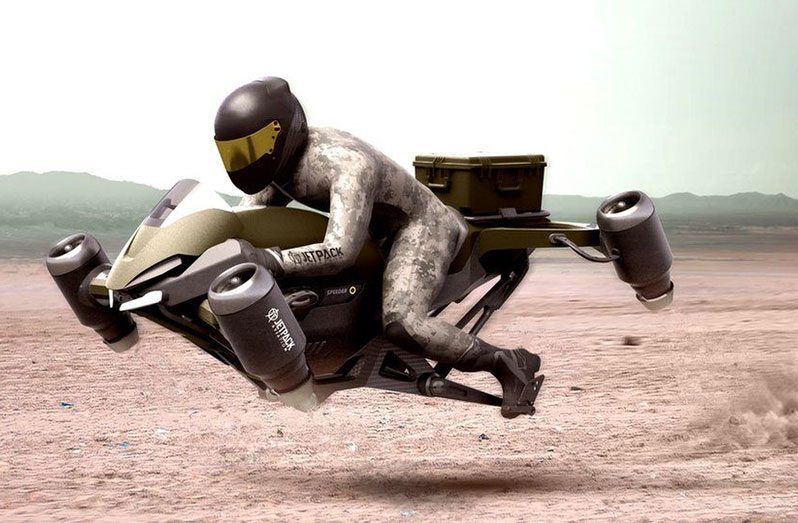At around the age of 12, David Mayman tried to build a helicopter out of fence posts and an old lawn mower.
Needless to say, it did not go well. His contraption didn’t fly and he was made to fix the fence.
“I was brought up in a way that I guess challenged me scientifically… I was always told that nothing’s impossible,” he says.
Perhaps he got a bit ahead of himself during his childhood in Sydney, but as an adult Mayman, has built innovative machines that really do fly.
After selling his online listings business Mayman developed a jetpack, which in 2015 he flew around the Statue of Liberty.
But, since 2018, he has been working on a different kind of project, one he thinks will have more commercial opportunities. Called the Speeder, his new machine will be like a flying motorbike.
It will take off vertically, fly at high speeds, but be compact enough to fit in the back of a pick-up truck.
Speeder is just one of many flying machine projects under way at the moment.
There are currently hundreds of EVTOL (electric vertical take-off and landing) aircraft in development, with engineers hoping to create a new era of cheap, quiet air transportation.
But Mayman’s machine is very different from those aircraft. Instead of being powered by batteries and electric engines, his Speeder uses four small jet engines, which run on aviation fuel.
That might seem like a step backwards in technology, but for the customers Mayman has in mind, only liquid fuel will do.
He says the military, emergency services and the offshore energy industry want a fast, compact aircraft that can carry a significant weight.
For that, you need jet fuel, as it stores 20 times the energy of batteries for a given weight. Or in other words, to supply the power needed, batteries would be too heavy.
“If you want to carry a certain payload, and you want that aircraft to have a certain range and certain speed, the only way to do that with current technology is, with turbine engines,” Mayman explains.
The Speeder idea emerged from work with the US Navy, who were interested in a jetpack for use by the Navy’s special forces, the Seals.
“As is so often the case in aviation, you start with one set of specifications, and fairly quickly, you end up with an entirely different set of specs,” he explains.
“They initially wanted something that would carry a payload of 210 pounds (95kg), not far into the project that morphed to nearly 300 pounds (135kg). And they wanted it to be possible to train somebody literally in 10 minutes,” Mayman says.
None of that was possible with his existing jetpack product – something bigger and easier to fly would be needed, so the Speeder project was born.
Some of the jetpack technology was helpful on the new project, but much of it had to be developed from scratch.
To simplify things, while on the jetpack the direction of thrust is controlled mechanically by the pilot on the Speeder the angle of the four jet turbines is controlled by an electronic flight control system.
The key part of that system is bespoke software that understands the physics of the four very powerful jets. This means that when the pilot lifts-off or turns, the Speeder can angle its jets to make that happen.
Mayman says that owners will not necessarily need a pilots licence, as the Speeder’s flight control systems are doing much of the work to keep the aircraft steady.
“It’s effectively AI (artificial intelligence) – if you want to call it that – that understands what the vehicle is going to need… so it can start instructing the engines to be spooling up or spooling down,” says Mayman. (BBC)



.jpg)








